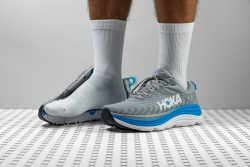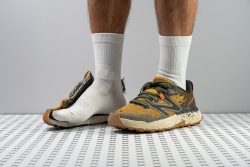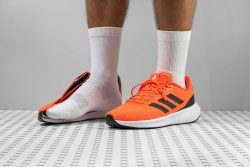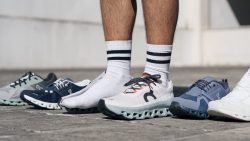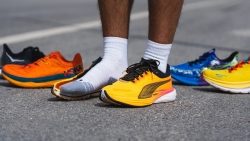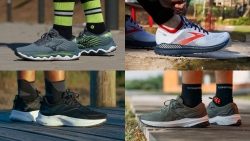7 Best Running Shoes For Wide Feet in 2024
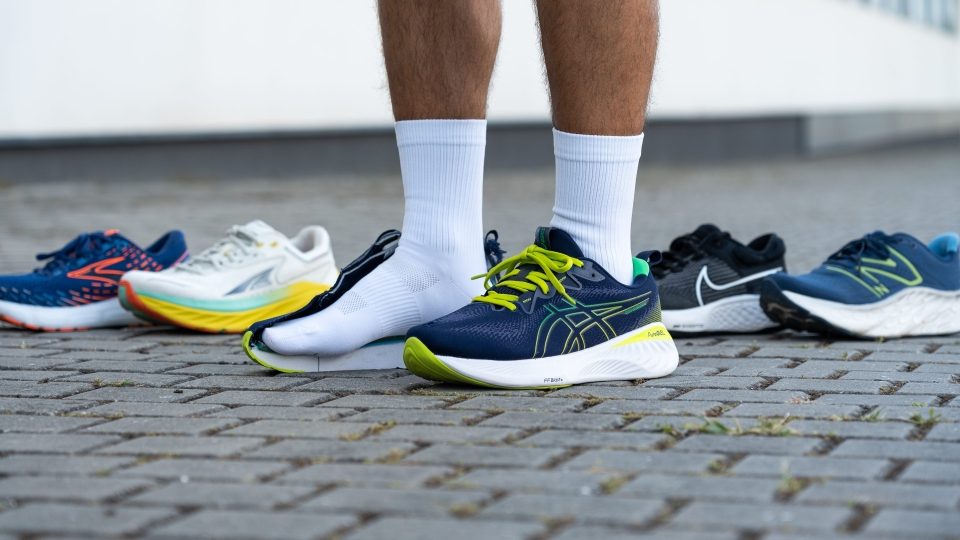
Runners with wide-foot problems struggle to find that perfect, comfortable fit. If your toes need enough room to spread, don’t worry. In this special feature for runners with wide feet, we have you covered.
Whether you’re into long-distance running, or simply need a comfortable shoe for a morning jog, we’ve rounded up wide-toebox running shoes and performed a strict selection process. We tested and wore them for a considerable amount of time. Then we selected our top choices depending on different categories.
From Altra, Brooks, and Nike, to ASICS, Saucony, and Salomon, we reviewed all of the shoes in the database. Take a quick look below at the top picks when it comes to running shoes with a wide-toe box.
How we test running shoes
At RunRepeat, we don’t just offer in-depth reviews but also helpful information for runners who struggle to find the right shoes to reach their goals. To achieve our goals, we’ve spent hours inside our independent shoe testing lab and worked with runners of all types for extensive wear testing on the road and trails.
We follow strict protocols in our selection process which includes:
- Buying with our own money all the running shoes with wide toebox across different brands. This is to make sure we remain bias-free and transparent
- Equipped with the necessary tools of the trade (scales, durometers, calipers, etc.), we cut each model into pieces in the lab. We then measure and analyze 30+ parameters of the shoe. This gives us the data we need with regard to its cushioning technology, ventilation, waterproof system, and many others.
- Clocking up 30-50 miles of running on each shoe for our real-world wear tests.
Best running shoes with a wide toe box overall
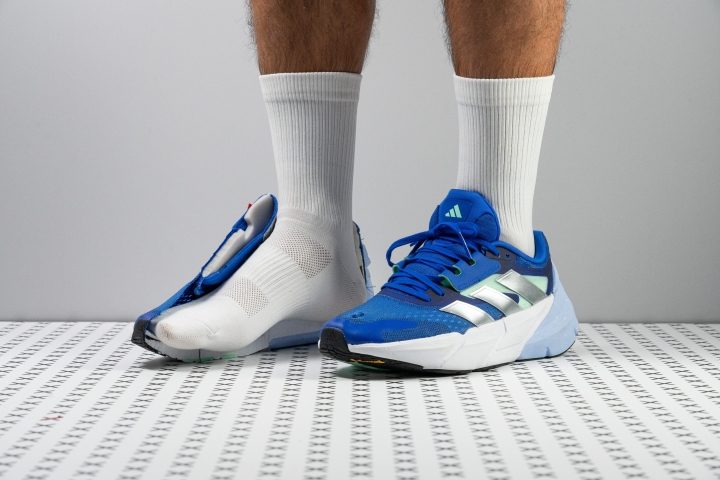
































What makes it the best?
The second Adidas Adistar truly shines in consistent support and comfort through its vast platform, balanced cushion, and top-tier upper. It's a neutral shoe with hints of stability. Giving our toes room to move and breathe, it wins the best running shoe with a wide toebox.
Its toebox feels round enough to allow our toes to splay naturally, especially in the big toe area, which has an extra 2.8 mm allowance vs. average. With an additional 4.9/6.0 mm in the forefoot and heel, the wide platform enhances free movement and planted landings.
Adistar 2.0 almost feels like a stability shoe with its dual-density foam. The first layer is a velvet cushion measuring 7.1% softer than average. Meanwhile, the second layer integrates the REPETITOR+ foam — which is firmer in the heel area. Our durometer shows it’s 30.6% tougher than average.
The upper keeps our runs sweat and blister-free as we feel the air flow in and out of the shoe. We’re not surprised that it scored the highest 5/5 on our breathability test since the mesh has large ventilation holes under our microscope.
With its accommodating fit, Adistar 2.0 sacrificed weight. At a monstrous 11.6 oz (328g) vs. the 9.5 oz (268g) average, it’s like running with weights on the feet.
Pros
- Cushioned for long miles
- Supportive for a neutral shoe
- Wide platform
- Secure foothold
- Well-padded interiors
- Highly breathable
- Great for casual wear
- Value for money
- True to size
Cons
- Heavier than average
- Firm heel landings
Best speed training shoes with a wide toebox
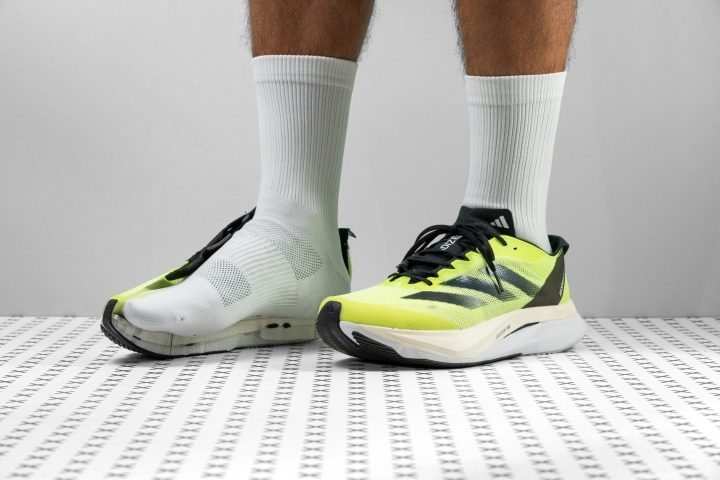











































What makes it the best?
With constrictive and uncomfortable toeboxes seemingly the norm these days when it comes to speedy shoes, the Adidas Adizero Boston 12 represents a breath of fresh air for runners with wide feet. It’s a lightning-quick speed demon of a shoe that zooms its way to the top spot as the best speed trainer with a wide toebox.
The Boston 12 features a dual-density midsole made using their Lightstirke 2.0, and Lightstrike Pro foams, the latter of which is a speedster’s dream. Scoring a durometer reading of 18.5 HA, it’s 23.5% softer than average, though that’s not what makes it special. As the foam compresses, it feels like it’s storing up potential energy for an explosive rebound that propels us forward without feeling overly springy or bouncy.
Using our caliper, we measured the toebox to be 101.9 mm wide at its widest point and 78.2 mm at the big toe. This is 3.8 mm and 1.1 mm wider than the average toebox respectively, and means that the Boston 12 should be wide enough to accommodate most foot shapes with adequate room for toe splay.
The Boston 12 favors forefoot/midfoot strikers. With its midsole measuring only 86 mm wide, it’s 4.1 mm narrower than average. This affords heel strikers much less of a landing platform than their forefoot striking counterparts. As such the shoe will feel much less stable at high speeds, especially when cornering.
Pros
- Lightstrike 2.0 brings a remarkable upgrade
- Delivers a fun ride
- Lighter than versions 10 and 11
- Handles both slow and fast paces with ease
- Wide toebox
- Durable and grippy Continental outsole
- Even more Lightstrike Pro superfoam
- Improved stability due to a broader base
- Fantastic for midfoot-to-forefoot strikers
Cons
- Upper durability falls short
- Tongue and heel could benefit from extra padding
- Heel strikers might prefer v11
Most comfortable running shoes with a wide toebox









































What makes it the best?
From the luxurious yet energetic midsole foam to the snug yet roomy lockdown; the Ultraboost light is truly a creature of comfort in the form of a sleek daily trainer that is easily the most comfortable wide toebox running shoe.
Pressing our durometer against the Ultraboost Light’s midsole foam gives us a positively plush reading of 15.5 HA which is 35% softer than our current lab average. This not only ensured that we enjoyed soft and protective landings during our test runs, but the proprietary Boost foam has a snappy and energetic rebound that makes the shoe feel propulsive as well as comfortable underfoot.
The Ultraboost Light is certainly a roomy shoe. Measuring the toebox at its widest point we found it to be 4.8 mm wider than average, while the area around the big toe is 4.5 mm wider than average. This means that even runners with very broad feet should be well-accommodated by this shoe.
With a high drop of 11.9 mm and a forefoot stack 4.3 mm shorter than average at 18.2 mm according to our caliper, the Ultraboost Light won’t feel nearly as comfortable underfoot to forefoot strikers compared to their heel striking counterparts.
Pros
- Cushy and responsive ride
- Good for easy runs and long distances
- Ideal for heel strikers
- Suitable for wide feet
- Effective stability elements for mild pronation
- Snug and secure lockdown
- Durable toebox and heel
- Outsole built to last
- Ready for winter runs
- Works as a comfy walking shoe
- Sustainably designed upper
Cons
- Thin forefoot cushioning
- Could be lighter
- Slippery on wet surfaces
- Not for speedwork
- Average at best breathability
Best stability running shoes with a wide toebox













































What makes it the best?
We searched high and low for the best stability shoe for runners with wide-foot concerns, and our lab analysis and test runs led us to Hoka’s Gaviota 5. With a forgiving fit, subtle stability features, and delightful cushioning, it gives all the support we need without sacrificing comfort.
The midsole felt unrestricted with its wider-than-average measurements of 125.1/106.6 mm. This extra space ensured our safe and sound strides. We also felt centered throughout our runs and our cut-in-half shoe reveals the H-Frame, which gently guides our foot alignment.
Gaviota 5 holds a superior blend of comfort and surefootedness by incorporating dual-density foams. The top layer is a firm 22.0 HA for enhanced stability, while the soft 12.9 HA foam absorbs impact landing.
What also keeps us refreshed is the breathable and spacious upper. Our breathability test reveals a well-ventilated 5/5 mesh material. Meanwhile, the toebox allows our natural toe splay with its 101.8 mm width that tapers gently to the 83.1 mm big toe area.
We anticipated this cushioned stability shoe to be heavy and unfortunately, it was. At 10.6 oz (299g), it proved to be somewhat burdensome during faster runs.
Pros
- Remarkably stable
- Breathable and comfortable upper
- Lightweight for its size
- Plushier than ever
- Good stability option for forefoot strikers
- Ideal for wide feet
- Excellent for long runs
Cons
- Low drop might pose issues for heel strikers
- Performs poorly in colder conditions
- Not for narrow feet
Best low drop running shoes with a wide toebox
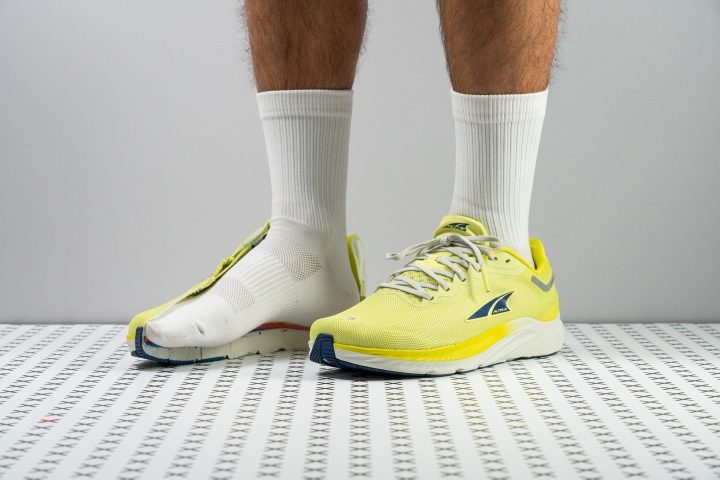













































What makes it the best?
Altra Rivera 3 truly impressed us in our test runs and lab trials, delivering a smooth and enjoyable ride at any distance and pace. Its midsole feels cushioned, responsive, and forgiving all at the same time. The roomy interior and airy build enhance a natural feel, making this daily trainer our best low-drop running shoe with a wide toebox.
Our toes were relaxed and free thanks to the generous wiggle room. The widest part stands 2.4 mm above the average and the big toe area doesn’t taper as much. This makes it more accommodating to runners with broad or swollen feet.
The midsole is pure bliss, feeling both cushioned and responsive. Our durometer shows it's 34.7% softer than average. Despite the modest stack and low 1.7 mm drop, our legs feel protected during landing impact, followed by a snappy rebound during takeoff.
Rivera 3 feels light on foot and our scales confirm it’s below the average of road-running shoes at 9.1 oz (257g). The adaptive midsole that flows freely with our movements adds to its lightness. True enough, our bend test retells this story as it emerged 20.9% more flexible than average.
However, we felt that the rear area lacked the secure lockdown we wanted as some of us experienced heel rubs during test runs.
Pros
- Great for easy runs
- Superb comfort
- Plush cushioning
- Peppy and responsive
- Flexible and forgiving ride
- Unhindered and smooth strides
- Toebox easily accommodates wide feet
- Works great as a walking shoe
- Can go sockless
Cons
- Lockdown needs a lace lock
- Laces get untied easily
- Not great for speedwork
Best trail running shoes with a wide toebox






























What makes it the best?
The Fresh Foam X Hierro v7 is an absolute treat to take on the trails, and not just because of its very accommodating toebox. It also has a super-soft midsole, excellent stability, and tremendous grip, which make it our top wide-toebox trail shoe.
The Hierro v7 has a unique toebox shape that tapers just 21.6%, which allows the shoe to accommodate so many different shapes of feet. Our lab measurements found that its toebox width at the widest part is 97.9 mm, which is 0.8 mm narrower than the average trail shoe, but its width at the big toe is 3.8 mm wider.
But the outsole is the shining star of the Hierro v7. We found the traction to be highly reliable and confidence-inspiring even on the most demanding terrains. Not only that, but the outsole rubber, which is 3.9% harder than average, showed next to no signs of wear even after several miles of use.
Meanwhile, the Hierro v7's midsole is magnificently soft and comfortable to take on long trail runs. In fact, its 9.4 HA durometer reading is among the softest we've ever measured on any shoe in our lab. And despite that super-soft midsole, the shoe's stability remains rock-solid. That's because of its wide platform, whose forefoot and heel width are 2 mm and 1.6 mm wider, respectively, than the average trail shoe.
However, the Hierro v7 does fall a bit short in terms of forefoot cushioning. It has just 22.5 mm of forefoot stack, which is 1.6 mm less than the average trail shoe.
Pros
- Grippier than ever before
- Ready for a rough beating
- Lighter than ever
- Seamless heel-to-toe
- Stable during sharp turns
- Buttery soft
- Welcomes wide feet
- Tongue stays in place
- Also for hiking!
Cons
- Not enough airflow
- Forefoot lacks cushion
Best budget running shoes with a wide toebox
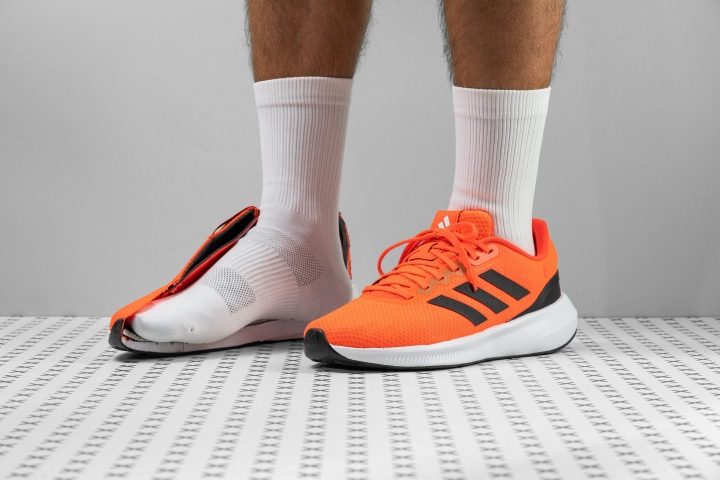









































What makes it the best?
At only $65, the third Runfalcon offers versatility, support, and an accommodating fit for wide feet. It’s an all-rounder that suits heel-strikers best. It's great for casual runs, daily wear, and gym workouts. Based on our test runs and all the lab tests, especially the ones where we used a caliper to measure the width of the shoe, it’s the best budget running shoe with a wide toebox.
Our feet could move comfortably inside the shoe, as we measured the upper's widest part at 100.4 mm vs. the 98.0 mm average. There’s enough wiggle room for our toes with the 80.4 mm space in the big toe area. Meanwhile, the midsole offers a vast landing platform for safe and steady landings. We also discovered TPU plastic surrounding the heel for further stabilization.
Runfalcon 3 allows us to move naturally with its non-resisting midsole. Our flex test validates it’s one of the most flexible shoes we’ve tested, being 40.8% more adaptive than average. This highlights the shoe’s versatility and explains why it's so comfy for walking and gym sessions.
The cushion feels balanced underfoot, as our durometer confirms it’s around the average. It has a 31.6 mm heel stack that dampens the landing impact of heel strikers.
On the other hand, it doesn’t offer enough cushion for forefoot and midfoot strikers. It measures 6.6 mm below average, ultimately leading to harsher landings.
Pros
- Continues to provide exceptional value at only $65
- Incredibly durable outsole
- Accommodates wide feet comfortably
- Offers a flexible ride
- Budget-friendly
- Versatile enough to serve as a gym shoe
- Provides substantial comfort for heel strikers
- More cushion than previous versions
Cons
- Lacks cushioning in the forefoot area
- Weighs more than v1 and v2
- The upper is not durable at all
Do you really need wide running shoes?
Just because it might sound like a good idea, wearing wide running shoes might not be the right thing to do. Check whether you actually need them.
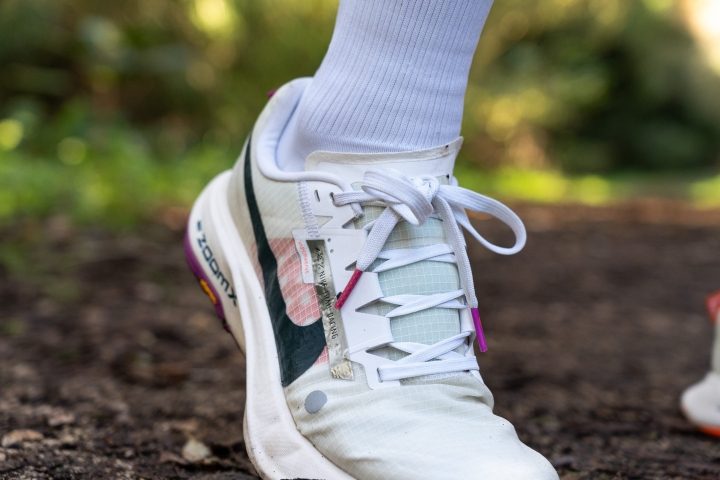
You can take the insole out of the current shoe, stand on it, and see if any part of your foot hangs over the insole. If it does, you might need wider shoes.
A few other ways to tell:
- Your toes are always cramped in the toe box
- Your bunions are hurting
- Your pinkie toe is trying to escape from the toebox and might be poking a hole
- You feel pressure on the instep even when the laces are not over-tightened
- Burning sensation all over your feet because the shoes are tight all over
- The moment you put on the right-size shoes, you want to take them off because they are so tight. And sizing up isn’t helping; they are long but still tight.
If you answered one or more questions with Yes, then welcome to our guide to wide running shoes.
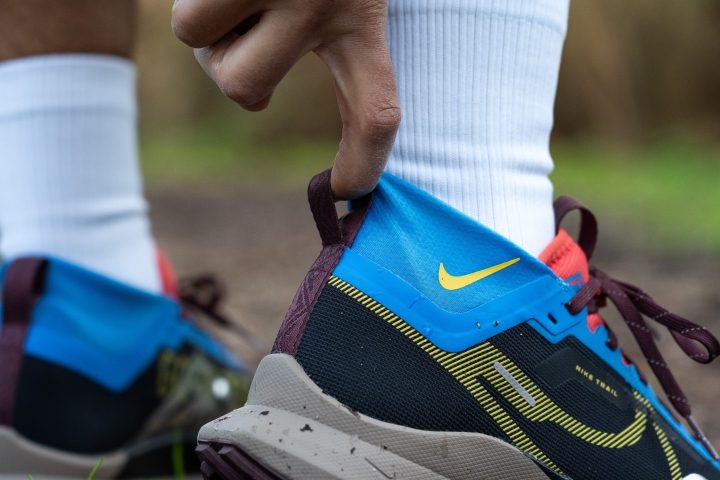
When shoes are too tight, you might experience different problems: from black toenails because the nails are taking all the pressure from the upper, painful corns and calluses because they need more space, to blisters and ingrown toenails.
How to recognize wide running shoes
If you need wide running shoes, look for the labels below. You can find them on the shoe box, on the shoe itself, and in the description (when buying online) as a part of a shoe name or under more details.
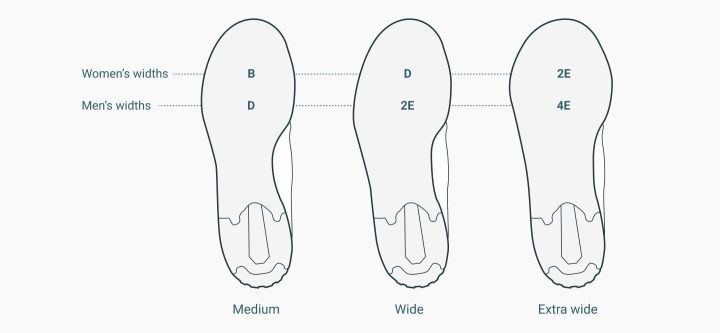
If you’re a man, look for 2E for wide shoes and 4E for extra wide running shoes. If you’re a woman, look for D or 2E, depending on whether you need wide or extra-wide shoes.
|
Width |
Men |
Women |
|
Narrow |
B |
2A |
|
Medium/Standard |
D |
B |
|
Wide |
2E |
D |
|
Extra wide |
4E |
2E |
Industry labels for different widths of running shoes
Women and men have different labels because their feet are different. Women’s heels tend to be narrower and forefoot wider.
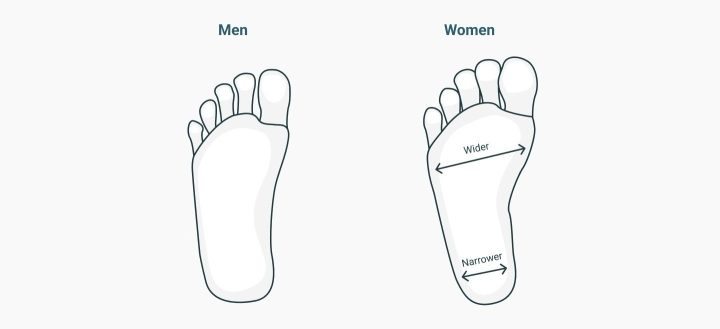
Precise lab measurements and shoe recommendations
When it comes to the type of the upper, knit uppers are best for wide feet because they are soft and stretchy. Mesh uppers can be too harsh.
One of our tests is measuring the width of the toebox. We use a digital caliper to measure how wide the running shoe is a) at the widest part (ball of the foot) and b) at the big toe.

Toebox width measurements: at the ball of the foot (left) and at the big toe (right)
These numbers tell us the obvious: how wide the shoe is at the toebox. However, the difference between them also tells us how much the toebox tapers. The bigger the difference, the more pointy the toebox is.
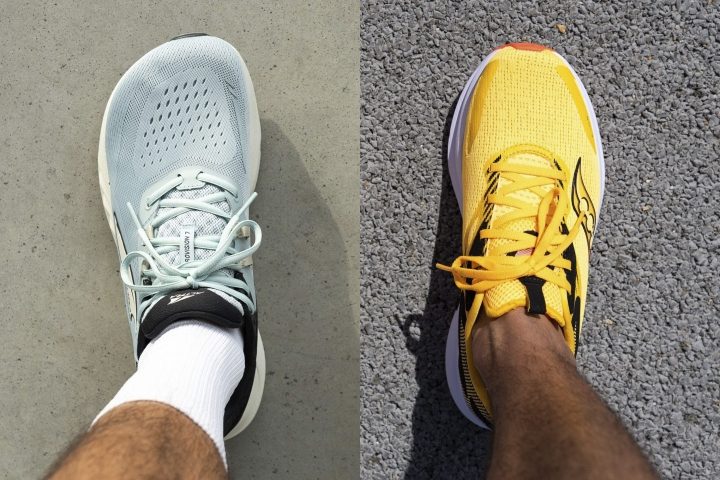
Wide toebox (left) vs. a pointy toebox (right)
Depending on the shape of your toes, you will care more about the one width (at the ball of the foot) or the other (at the big toe). It’s up to you what you will prioritize.
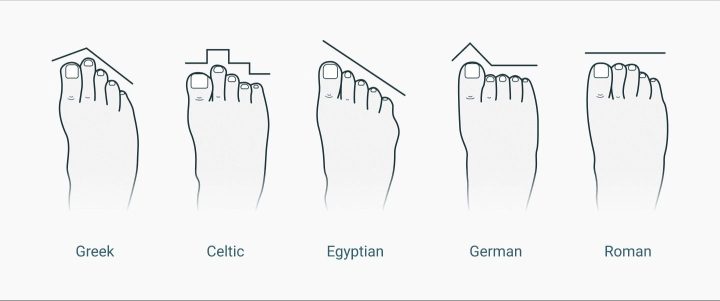
For people who love it when their toes can splay, the big toe width matters more. They want the least pointy shoes. Actually, not pointy at all.

Here, we list (and automatically update) daily running shoes with the widest toeboxes.
If you’re looking for a tempo shoe with a wider toe box, here are the top 10 from our database. This table is dynamic, so if a new shoe that comes through the lab has a wide toebox, it will be here.

Although races, especially shorter ones, ask for a snug and aggressive fit, some find it too uncomfortable and maybe even painful. If that someone is you, here’s a list of the widest competition running shoes. It is automatically updated at all times.
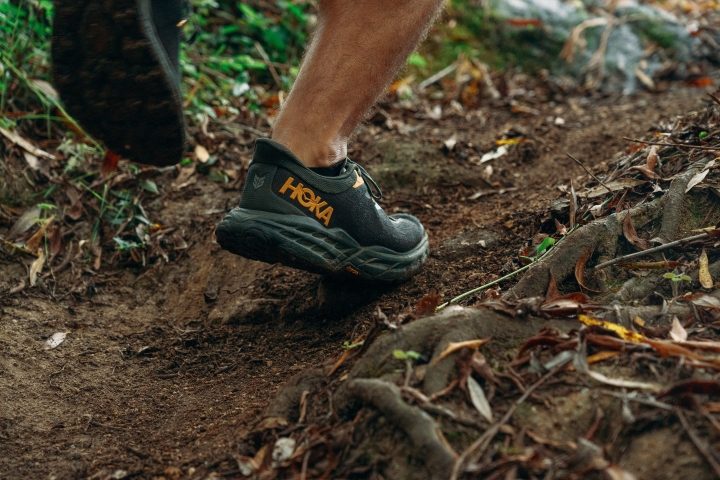
In trail running, it’s even more important for the fit to be just right, because the terrain is uneven and ever-changing. Sliding and slipping can have more serious consequences than when running on the roads.
This also means it’s very important not to go too snug because the pressure points can become unbearable and end with blisters (best-case scenario).
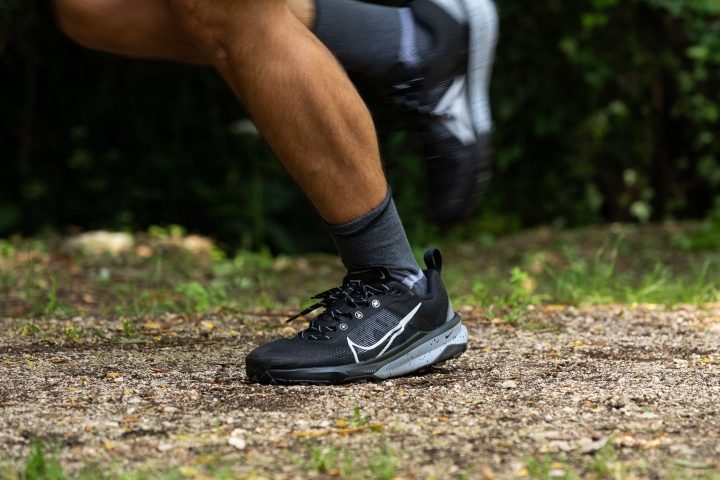
Here’s our list of the widest trail running shoes at the toebox. This list is dynamic, which means whenever we test a trail shoe whose toebox is wide enough to end up here, it will.
Why is no one talking about the toebox height?
Runners whose big toes are pointing up are usually the only ones talking about the height of the toebox. Such toes can’t wait to hit the toebox ceiling and maybe even try to dig through it.
Close inspection of a knit upper
If the upper material is soft, sooner or later, a hole appears. Big toe breaks free. If the material is stiff, harsh, or maybe it has protective overlays in that spot, we’re talking about blisters, bleeding, and black toenails. To start with.
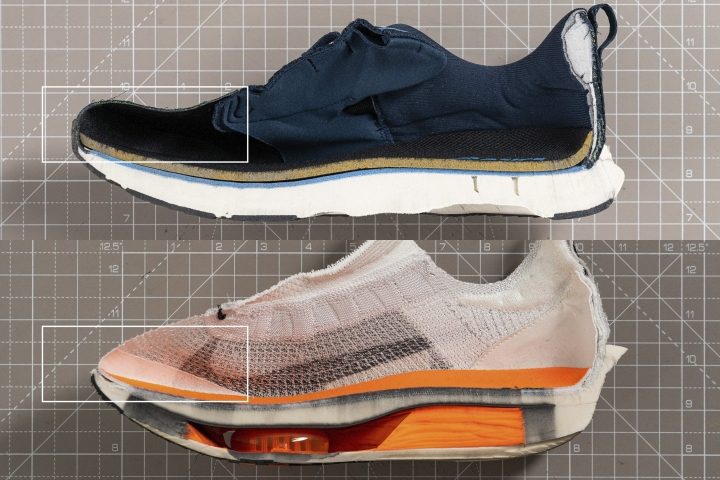
High toe box (up) vs. a very low toe box (down)
Because of this, we pay attention to the height of the toebox. There isn’t a measurement for it, so we advise runners to:
- Look at the images of running shoes cut in half
- Try the shoes on.
Fortunately, all the shoes that we tested have been cut in half, so it’s easy to compare and understand which toebox is higher/lower.
Foot-shaped toebox: should you go for it?
In short, if you have a wide forefoot and you love it when your toes have enough room to splay, you could give it a try.
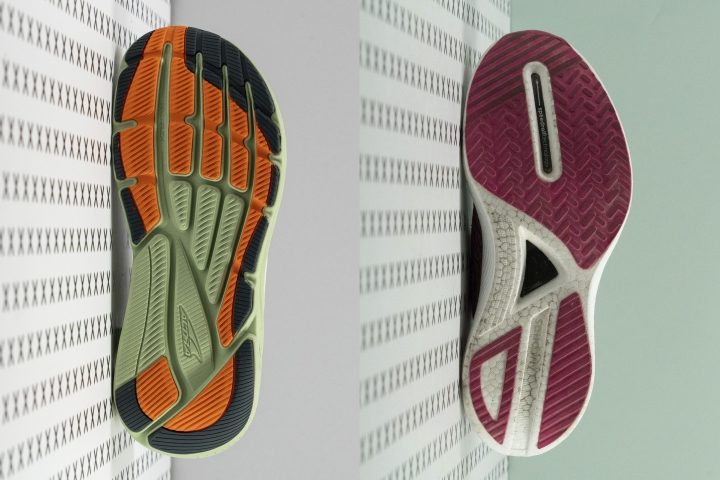
Outsole of a foot-shaped (left) and non-foot-shaped running shoe (right)
However, the so-called foot-shaped toebox is a trademarked shape from Altra, and all Altra shoes are zero-drop.
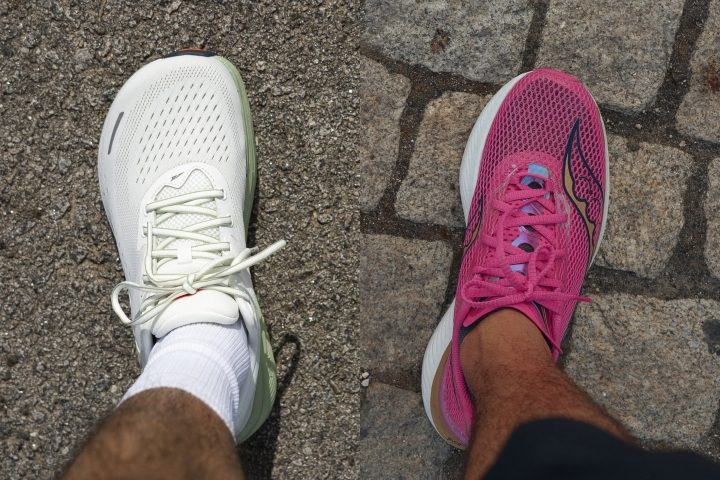
Foot-shaped (left) vs. non-foot-shaped running shoe (right)
This means that there’s no drop between the heel and the toes, it is 0mm. For context, beginners are advised to use running shoes with an 8-12 mm drop. Changing the drop suddenly, and especially going for the 0mm when you’ve never done it before, is not something we recommend. We wrote about this and covered many details in the Ultimate guide on the heel drop.
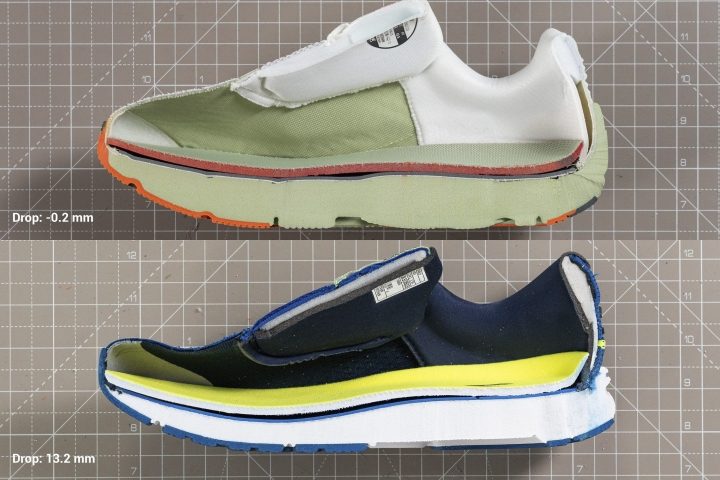
Different heel drop of a foot-shaped shoe (up) and non-foot-shaped shoe (down)
Although it’s called foot-shaped, there isn’t only one such shape made by the Altra, there are actually 3: original, standard, and slim. What’s great is that they are all on the wider end. The only caution here is related to the heel drop, as explained above.
When is wide too wide?
When you can’t achieve a proper and secure lockdown in your running shoes. You experience:
- Heel slipping
- Feet sliding from one side to another in the shoe
- Toes have too much wiggle room, so you feel insecure and like you’re losing grip, especially on the trails
- Changing the stride because you’re trying to compensate for a fit that is too loose which results in premature foot/leg fatigue
- Your ankles might be twisting/turning more often because the shoe isn’t locked to your foot properly.
- You’re trying to grip the ground using the toes, which results in pain and can get worse.
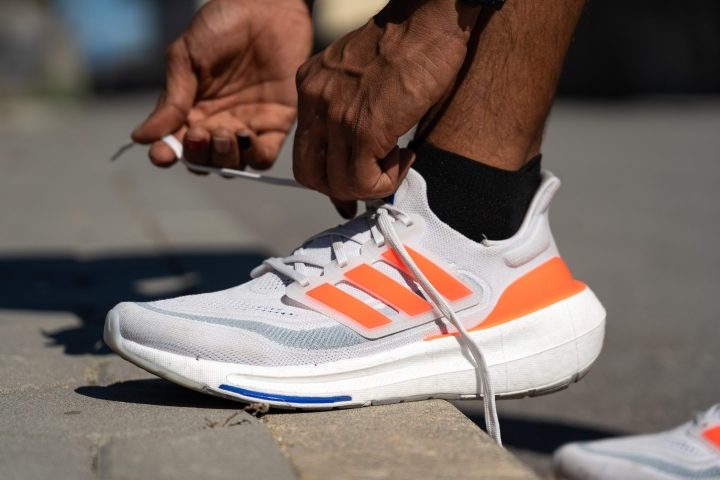
A fit that is too loose brings unnecessary (big) risk to your runs.




